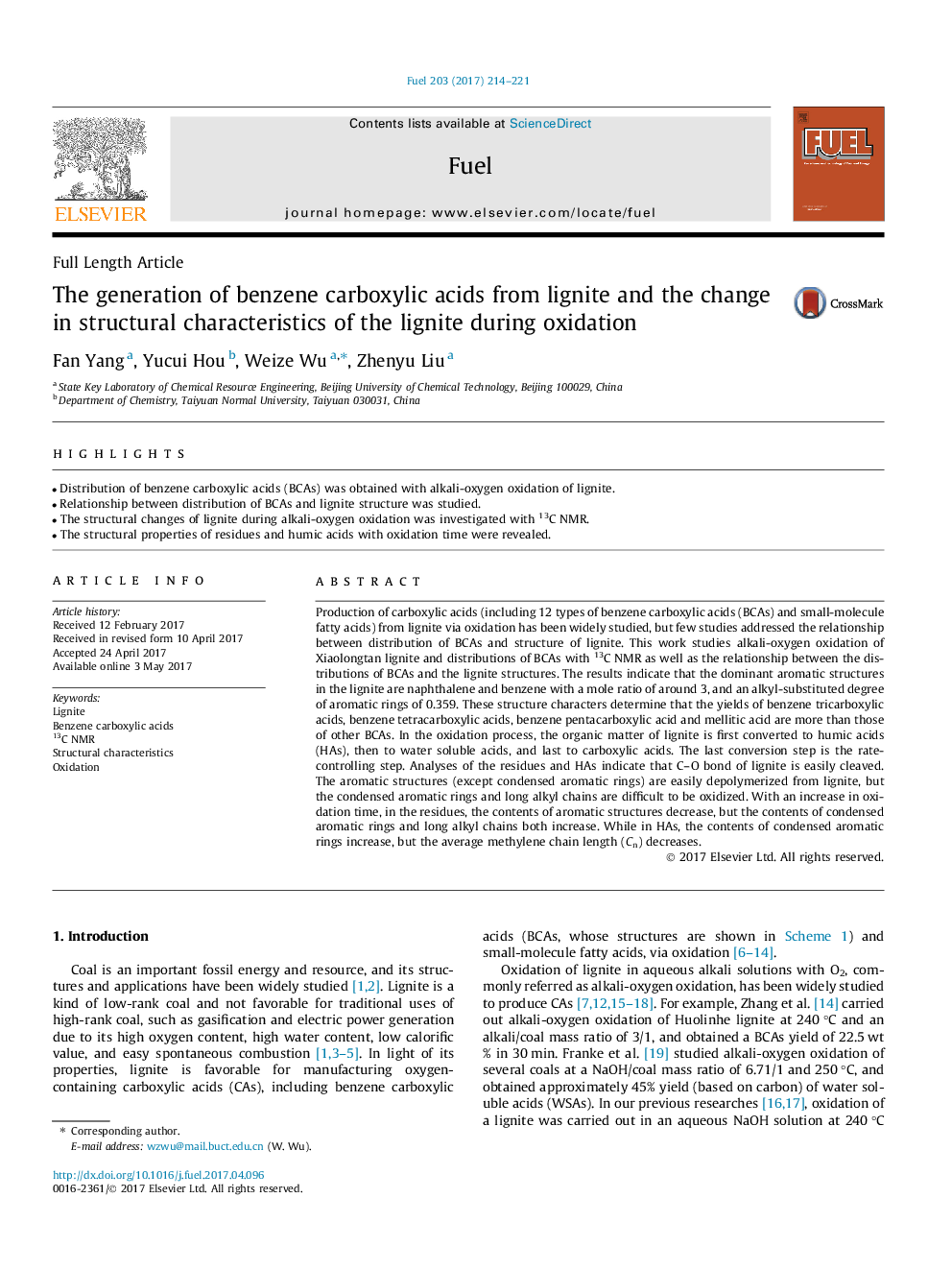| کد مقاله | کد نشریه | سال انتشار | مقاله انگلیسی | نسخه تمام متن |
|---|---|---|---|---|
| 6474292 | 1424961 | 2017 | 8 صفحه PDF | دانلود رایگان |
- Distribution of benzene carboxylic acids (BCAs) was obtained with alkali-oxygen oxidation of lignite.
- Relationship between distribution of BCAs and lignite structure was studied.
- The structural changes of lignite during alkali-oxygen oxidation was investigated with 13C NMR.
- The structural properties of residues and humic acids with oxidation time were revealed.
Production of carboxylic acids (including 12 types of benzene carboxylic acids (BCAs) and small-molecule fatty acids) from lignite via oxidation has been widely studied, but few studies addressed the relationship between distribution of BCAs and structure of lignite. This work studies alkali-oxygen oxidation of Xiaolongtan lignite and distributions of BCAs with 13C NMR as well as the relationship between the distributions of BCAs and the lignite structures. The results indicate that the dominant aromatic structures in the lignite are naphthalene and benzene with a mole ratio of around 3, and an alkyl-substituted degree of aromatic rings of 0.359. These structure characters determine that the yields of benzene tricarboxylic acids, benzene tetracarboxylic acids, benzene pentacarboxylic acid and mellitic acid are more than those of other BCAs. In the oxidation process, the organic matter of lignite is first converted to humic acids (HAs), then to water soluble acids, and last to carboxylic acids. The last conversion step is the rate-controlling step. Analyses of the residues and HAs indicate that C-O bond of lignite is easily cleaved. The aromatic structures (except condensed aromatic rings) are easily depolymerized from lignite, but the condensed aromatic rings and long alkyl chains are difficult to be oxidized. With an increase in oxidation time, in the residues, the contents of aromatic structures decrease, but the contents of condensed aromatic rings and long alkyl chains both increase. While in HAs, the contents of condensed aromatic rings increase, but the average methylene chain length (Cn) decreases.
Journal: Fuel - Volume 203, 1 September 2017, Pages 214-221
